The letter Wāw is one of the distinctive letters in the Arabic language. It is characterized by its labial sound and flexibility in both pronunciation and writing. Additionally, Wāw is commonly used as a conjunction, making it one of the most frequently appearing letters in everyday Arabic. The forms of the letter Wāw vary depending on its position within a word and whether it is connected to a preceding letter or written separately. This lesson explores the different forms of Wāw at the beginning, middle, and end of words in a simplified instructional approach, supported by clear and practical examples to help learners recognize and understand each form with ease.
Practice Exercises on the Forms of the Letter Wāw in Different Word Positions
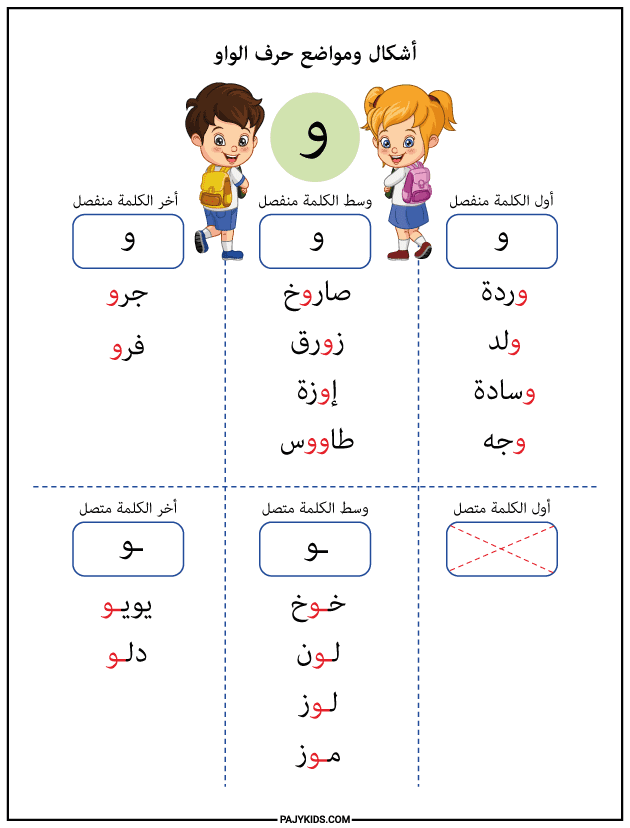
- Form of Wāw at the Beginning of a Word
When the letter Wāw appears at the beginning of a word, it does not connect to the following letter and is written in the form: “و”.
Examples: ward (وَرد), walad (ولد), wisāda (وسادة), wajh (وجه).
In this position, Wāw appears independently above the line. It is one of the simplest forms of the letter Wāw, visually distinct and easy to recognize. With its curved shape and short stroke, this form is especially suitable for teaching children at the early stages of learning the Arabic alphabet.
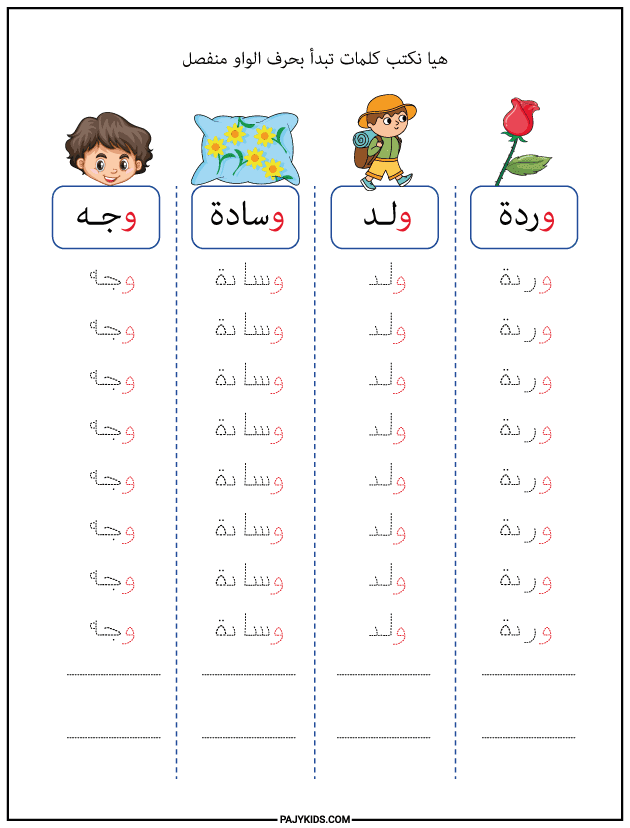
- Isolated Form of Wāw in the Middle of a Word
When Wāw appears in the middle of a word, it may also be written in its isolated form, as it does not connect to either the preceding or the following letter. The shape remains: “و”.
Examples: ṣārūkh (صاروخ), zawraq (زورق), ’awza (إوزة), ṭāwūs (طاووس).
This position demonstrates that the forms of the letter Wāw generally remain consistent. Although it maintains its detached form, learners must be trained to recognize its presence within the context of the word for accurate comprehension and fluency.
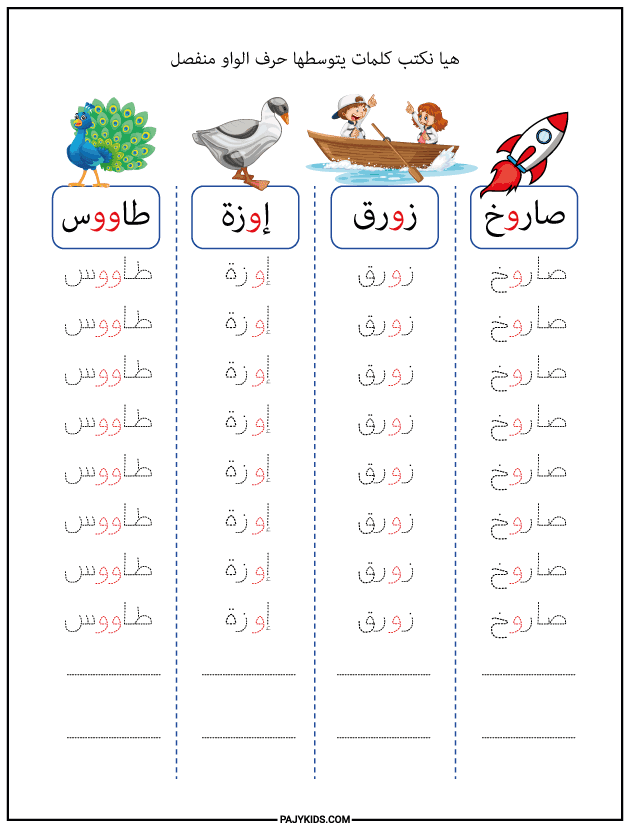
- Connected Form of Wāw in the Middle of a Word
In some instances, Letter Wāw appears in the middle of a word connected to the preceding letter but not to the following one, and it is written as: “ـو”.
Examples: khawkh (خوخ), lawn (لون), lawz (لوز), mawz (موز).
In this case, the Wāw is preceded by a connected letter, forming the connected form of the letter Wāw. It is essential for learners to recognize both connected and isolated variations, especially since this letter appears frequently in modern vocabulary.
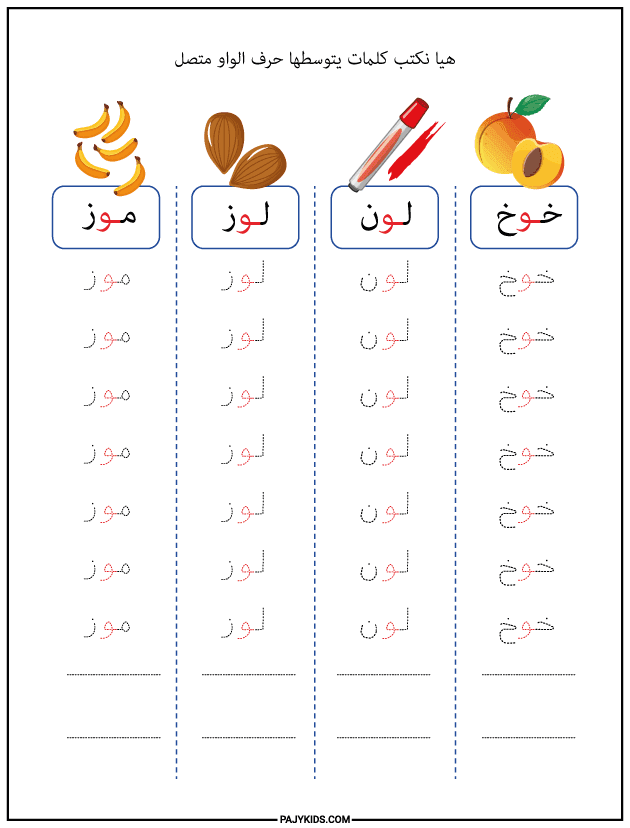
- Form of Wāw at the End of a Word (Connected)
In certain words, the letter Wāw appears at the end of a word, connected to the preceding letter. It is written as: “ـو”.
Examples: yūyū (يويو), dalw (دلو).
Students must be aware that the letter Wāw at the end of a word can occur in both connected and isolated forms. Exposure to both helps build a solid understanding of Arabic orthography.
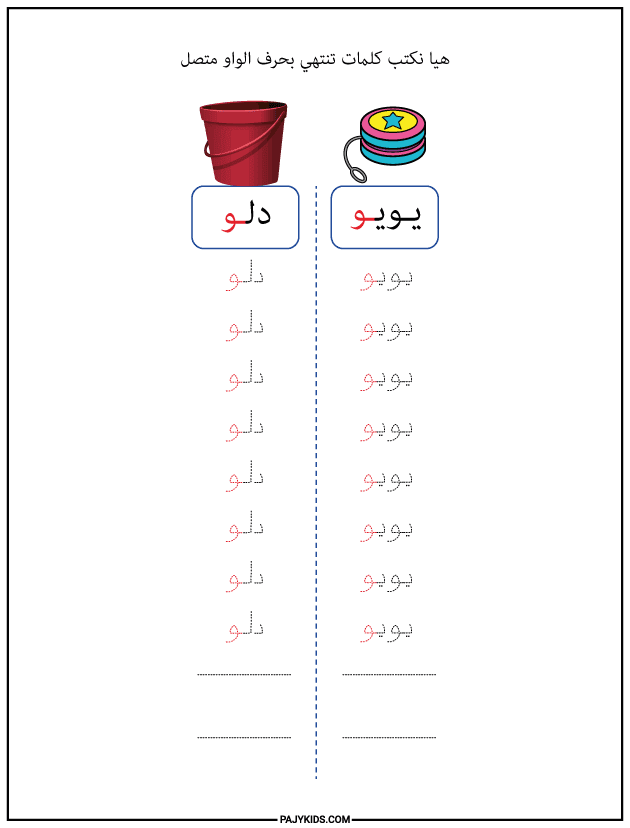
- Form of Wāw at the End of a Word (Isolated)
When Letter Wāw appears at the end of a word after a non-connecting letter, it is written independently in its standard form: “و”.
Examples: jarū (جرو), farū (فرو).
This form does not differ significantly from its appearance in other positions, which is why the forms of the letter Wāw are considered among the most consistent in Arabic writing. Nevertheless, repeated exposure and writing practice are vital for reinforcing this recognition in young learners.
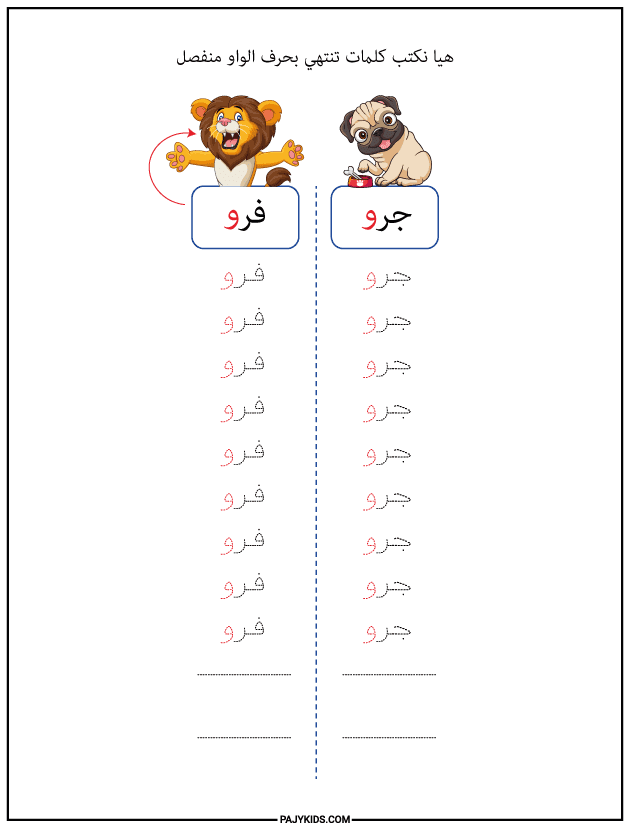
The forms of the letter Wāw are generally stable across different word positions, with minimal variation. However, students must receive structured training to understand when the letter connects or remains isolated. Mastery of this letter enhances reading fluency and comprehension. Through the use of real-word examples and consistent writing practice, learners can confidently acquire and apply their knowledge of this fundamental Arabic letter.